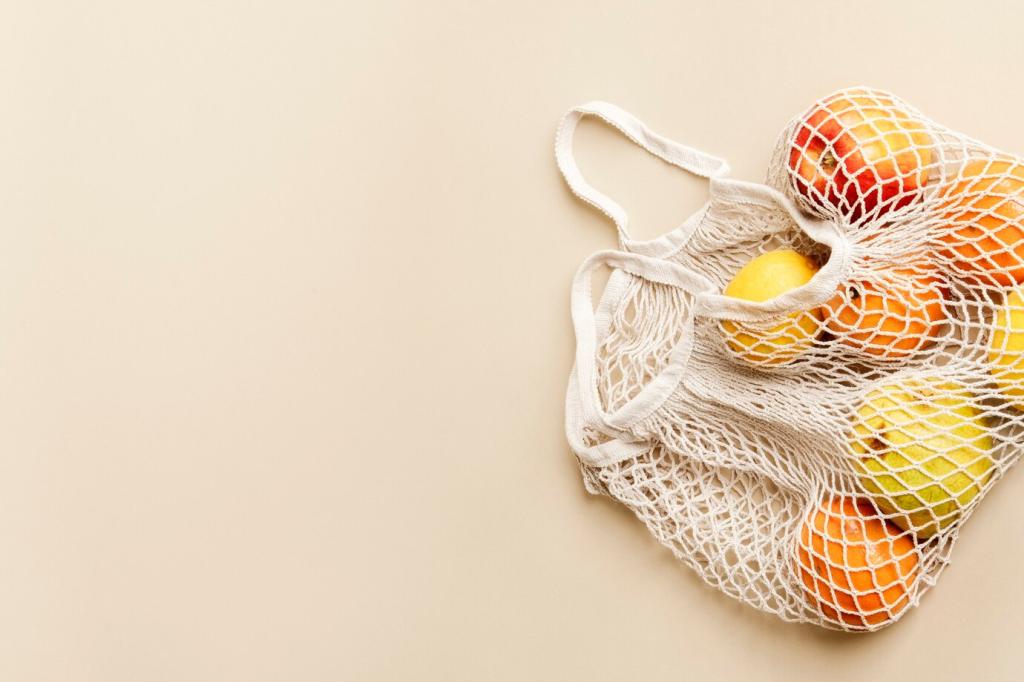
Efficient Waste Segregation Techniques in Eco Homes
Welcome! Today’s chosen theme is Efficient Waste Segregation Techniques in Eco Homes. Dive into practical setups, habits, and smart tools that make sorting second nature, reduce contamination, and keep your eco home organized. Share your setup ideas and subscribe for weekly, theme-aligned tips.

Color-coded bins and intuitive labels
Choose a consistent palette and stick with it across rooms: green for organics, blue for recyclables, gray for residual, and red or orange for hazardous items. Add bold icons, short phrases, and even tactile stickers for kids. Tell us which colors your city uses, and we’ll tailor our next guide.
Strategic placement in daily traffic zones
Position bins where decisions happen: a compost caddy near the cutting board, a paper box beside the desk printer, and a battery jar by the entry console. A staging tote in the pantry simplifies transfer before collection day. Comment with your best placement hack to inspire fellow readers.
Rituals that make sorting automatic
Build tiny rituals that stick, like a nightly five-minute sweep sorting stray packaging, or a Saturday label refresh. Use a chore wheel so everyone rotates responsibility, and celebrate contamination-free weeks with a small family reward. Subscribe to get printable labels and habit trackers aligned to this theme.
Mastering the Material Streams
Scrape plates into a lined countertop caddy, freeze scraps during heat waves, and add shredded paper towels as dry browns. Keep coffee grounds and tea leaves separate from plastic teabags. Do a Sunday fridge sweep to catch wilted produce early. Share your no-odor trick with our community.

Mastering the Material Streams
Quickly rinse food containers, air-dry them in a dish rack, and flatten cardboard to save bin space. Remove plastic film and mixed material liners when required locally. Keep a note on what your municipality accepts. Ask questions in the comments, and we’ll crowdsource answers responsibly.
The ten-second rinse rule
Adopt a simple rule: if a container held food, give it a ten-second rinse and shake before drying. Keep an old brush by the sink to reach corners. This quick habit dramatically reduces sticky residues that attract pests and ruin paper fibers. Post your favorite time-saving sink setup.
Material look-alikes that mislead
Beware of compostable-looking cups that are actually plastic-lined, and black plastics that scanners often miss. Perform a quick tear test on soft films, and check for credible certifications on compostables. When in doubt, verify with local guidance. Share your most confusing item and how you solved it.
Home Composting Techniques That Fit Any Space
Bokashi buckets ferment food scraps, including small amounts of cooked leftovers, with minimal odor. Layer bran, press out air, and drain the liquid to dilute as a plant feed. This method works year-round and pairs well with a community compost drop-off. Share your bokashi recipe tweaks below.
Home Composting Techniques That Fit Any Space
A tidy vermicompost bin transforms peels into rich castings. Teach kids to balance feedings with shredded cardboard and to keep bedding moist like a wrung sponge. Careful sorting at the source makes worm work easier. Post a photo of your bin’s favorite spot, and we’ll feature creative setups.


Tools, Tech, and Storage That Help
01
Opt for slim-profile bins behind cabinet doors, magnetic caddies on the fridge for small recyclables, and a lidded organics pail by the prep zone. Add non-slip mats and soft-close lids to reduce mess and noise. Comment with the one container you would never give up and why.
02
Print a QR code linking to your city’s ‘what goes where’ page, and track weekly weights with a compact kitchen scale. If you enjoy data, a simple spreadsheet reveals contamination patterns and progress. Tell us which app or tracker motivated your household, and we’ll review it in a future post.
03
Use carbon filters in compost lids, sprinkle baking soda in residual bins, and freeze meat scraps until collection day. Rinse sticky bottles promptly and keep lids closed. Consistent segregation reduces odors at the source. Share your zero-odor regimen to help others refine their home systems.



Real Stories, Quick Wins, and Momentum
One family removed three confusing mini-bins and replaced them with a single, clearly labeled trio at the kitchen entrance. They added a fridge magnet quick guide and a weekly five-minute check. Contamination plummeted. Share your reset plan in the comments, and we’ll cheer you on.

